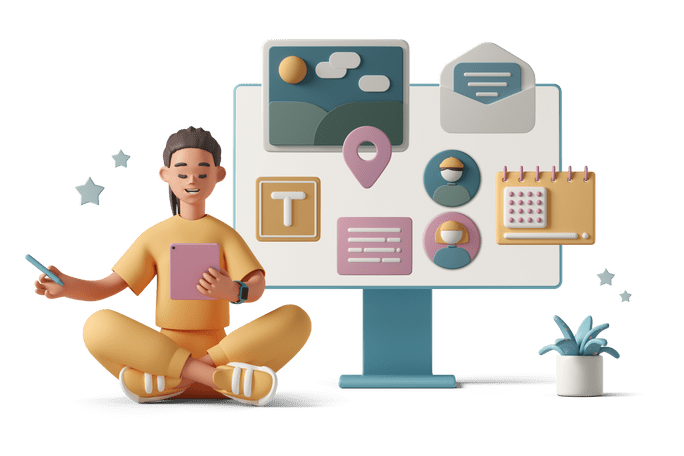Services
Creating an online store
Creating an online store
Currently, online stores are an integral part of business for manufacturers and retailers.
Design and development of e-commerce projects
Ecommerce projects are a rapidly expanding online sector facilitating buying and selling of goods and services. Their development and growth are paramount for modern businesses. Identifying the target audience and market is crucial prior to commencing a project. This insight informs effective design and functionality choices. For instance, catering to young consumers calls for a vibrant, modern design. Once the audience and market are defined, selecting an appropriate Ecommerce platform is the initial step. Options like Shopify, WooCommerce, Magento, and others are available. Next comes website design, which should be visually appealing and user-friendly. Ensuring mobile responsiveness is vital due to the increasing trend of smartphone purchases. Lastly, functional development is key. Providing a seamless and secure purchasing experience necessitates features like a shopping cart, payment processing, and shipping options. While Ecommerce project development demands time and effort, when executed correctly, it can yield substantial business success.
Online store
01/
We create eCommerce stores that help not only in selling but also in winning the hearts of customers. A user-friendly catalog, automated price and inventory updates, CRM integration for business management, reporting collection, and a customer interaction archive are just some of the benefits of our development.
Corporate websites
02/
Corporate websites should not be underestimated – they remain the best tool for presenting a company in the digital world. Showcase your products and services to the entire world, find partners, interact with clients online, and attract new audiences. Let them talk about you!
Internet portal
03/
Automate routine work processes, simplify your business, and provide your employees with new tools. Internet portals help streamline communication within the company, with clients, and with partners. It's an opportunity to tap into new market segments.
Catalog
04/
We create catalog websites for businesses, allowing you to update your assortment in real-time and present it to your audience, as well as update prices and inventory. This way, your business gains an extra level of flexibility.
Marketplaces
05/
Find new partners and customers on universal digital marketplaces. A marketplace opens up new opportunities for businesses, allowing you to expand your geography, attract new customers, and build omnichannel marketing.
Customized Web solutions
06/
Stand out among competitors, win the hearts of customers, and personalize services through your own unique platform. Creating turnkey sales websites will help businesses stay trendy, maintain loyalty, and easily adapt to any challenges.
We will help you
Request a free consultation - our experts will find the most effective solution.
Development of B2C/B2B online stores
We develop online stores for businesses that sell 24/7. They help streamline customer interactions and remove barriers. High-quality online stores with unique functionality contribute to the growth of a company.
Development of wholesale B2B systems
B2B portals provide the opportunity to work with wholesale clients, suppliers, and enterprises. Transparency in transactions, personalized approach, and tailored solutions increase the level of trust and aid in sales.
Online store redesign
If you already have a website that has become outdated, is not generating profit, or if you're spending too much on advertising, we offer a redesign service. We take into account modern requirements and enhance functionality.
Audit of an online store
We assess the effectiveness of your online store, develop a personalized growth strategy, and assist in scaling your company. We conduct a detailed analysis of competitors, customers, and business processes.
Technical support
We create custom tools for managing businesses in the online space, improve the technical state of the website, and ensure that online stores operate smoothly and efficiently. We place special emphasis on security and performance.
Marketing of an online store
We increase brand awareness, help attract a new audience, and improve loyalty metrics. Develop your online store using effective marketing strategies tailored to your business.
Stages of turnkey website development
Workflow01
Research and development of a strategy
Before starting the creation of a website for a business, it's essential to conduct a detailed analysis of competitors, study the target audience, understand the business needs, and determine what tasks the product will address. Analysts gather information and use it to create a development strategy for the solution. The specific industry, business operation nuances, and market conditions are all taken into account. This way, we provide the client with a platform that helps outperform competitors.

02
Creating design
The designer carefully considers the visual appearance of the website and develops the interface. Additionally, a prototype is created to give an understanding of how the product will look in the end. It helps take all nuances into account, determine the placement of elements, and compile the technical specifications for the programmers. The goal is to create a user-friendly and practical website with a design that maintains its individuality and relevance over time. It's crucial for the user to navigate easily and feel a friendly disposition towards the site.

03
Programming
The technical development of the website begins. During the creation of the technical specifications, the technology stack is determined, and a team of developers is assembled. Experienced professionals are chosen who can handle the assigned tasks. Modules are formed, code is written, and a phased testing is conducted. This is the most time-consuming stage, requiring thorough attention. The goal is to create a high-quality and useful product for the clients.

04
Connectivity
At the website development stage, experts integrate third-party programs and services that are necessary for the business. These include CRM, ERP, various business APIs, various payment systems, maps, and other tools. The goal is to make your website even more useful, expand its capabilities, and improve user-friendliness, all while reducing the development costs.

05
Security
The website is checked for vulnerabilities and load capacity. It is crucial for it to be stable, especially when payment systems are integrated. This is one of the most rigorous stages of website development, where experts search for and address any vulnerabilities. We use modern development technologies and platforms to ensure the security of your website. We guarantee reliable protection and the security of your customers' personal data.

06
Launch
Before the release, we conduct additional testing, simulating user actions. Security, load, usability, and product performance are once again verified. If necessary, adjustments are made. After testing, we upload the site to hosting, and attach the domain. From this point, the creation of the website for your business is complete. However, we provide warranty technical support and ensure everything is functioning. You can also opt for ongoing website maintenance services.

Discuss the project
Comprehensive Solutions
Prices and solutions
FAQ
We answer the most frequently asked questions
01
How is a website developed?
Website development is the process of creating and configuring a website, ensuring its functionality and design. The main stages of website development include the following:
- User Needs Analysis: The first stage of website development involves analyzing the needs of users. This helps developers understand what features and capabilities the website should have to meet user needs.
- Planning and Design: After analyzing user needs, developers begin planning and designing the website. This stage includes creating the site’s structure, design, and selecting the technologies for its implementation.
- Content and Design Development: Following the planning and design phase, developers start creating content for the website and selecting a design that aligns with its functionality and style.
- Functionality Development and Testing: After content and design development, developers proceed to develop the website’s functionality. This stage involves writing code, setting up the database, and testing the functionality.
- Testing and Debugging: After developing the functionality, developers conduct testing to identify and fix any errors that may arise. This stage ensures that the website functions properly.
- Deployment and Optimization: Once the website is ready and has undergone testing, it can be deployed on a server and optimized for high performance and fast loading times.
These stages of website development may vary depending on the complexity of the project and its specific requirements.
02
How much does it cost to create a website?
The cost of creating a website depends on various factors such as the complexity of the design, functionality, and the size of the site. The price can also vary depending on whether the website is planned to be developed from scratch or using ready-made templates and platforms. If you need a simple brochure website with standard design and a few pages, it can cost anywhere from $100 to $1000. The development of a more complex website with a large number of pages and functionality can range from $2000 to $10,000 or more. It’s also important to consider that after the website is created, maintenance and updates may be needed, which can also incur costs. Therefore, it’s best to contact several web developers before starting the project to get different proposals and cost estimates.
03
How long does it take to develop a website?
Depending on the complexity of the project and the scope of work, the development time for a website can range from a few days to several months. For example, a simple brochure website can be developed in a few days, while a complex web portal with a large number of features may take several months or even longer. Additionally, the development time may depend on how quickly the client provides the necessary information and approves decisions regarding the design and functionality of the website.
Creating an online store
To create an e-commerce website that generates profit, it’s not enough to simply add products and integrate payment systems. The primary requirement is a platform optimized for sales.
The goal of a selling website is to transform a casual visitor, who hasn’t yet decided if they need the product or if they’ll buy it from you, into a customer. To achieve this, you need to:
- Design an attractive and user-friendly interface for comfortable interaction between the customer and the website.
- Provide comprehensive information about the products.
- Draw attention to unique selling propositions.
- Simplify the purchasing process as much as possible.
Therefore, before commissioning an e-commerce website, it’s crucial to choose a contractor who is not only capable of implementing the technical aspects but also understands the specifics of your target audience.






















